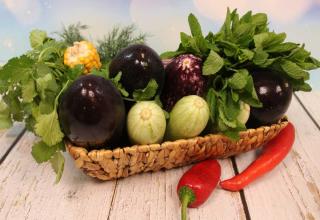

To transform your growing beds into spots of high ecological value, here are a few simple tips and solutions. Common sense applies and points the way to sustainable gardening.
It’s all about collecting rainwater, knowing your local plants and soil types, welcoming birds in the garden… Traditional ways to work with nature are more than ever at the pinnacle of progress.
Read also:
Pair different types of plants together: plant lavender in the immediate vicinity of thyme, since both can cope with high levels of drought. Make tomato and French marigold growing companions: the flowers will protect your red gold from whitefly or Aleyrodoidea. Cabbage loves growing in the companionship of celery which fends off cabbage moth, a white butterfly growing from caterpillars that devour cabbage leaves…
Rotate crops to balance the manner soil nutrients are collected and reduce propagation of parasites.
And never, ever keep the soil bare: plant green manure after every harvest.
A couple easy-to-catch habits will help you save on water and recycle part of it. With rainwater recovery tanks, drip-irrigation and other variations, you can learn to control this vital resource.
Even if you’ve only got a terrace or a small balcony, nothing should stop you from collecting rainwater! Knowing the water needs of your plants and preparing the soil well will avoid losing water through evaporation.
If your plants are the type that will always be thirsty, use techniques such as ollas, infiltration and drip irrigation. That way, water won’t go to waste, especially when combined with mulching.
In the vegetable patch, special housing shelters are set up to cater to the needs of ladybugs. A single ladybug will munch on over 150 aphids a day!
 Green lacewing (Chrysopidae) is another voracious predator. It attacks aphids, potato beetles, mites and ticks, flatid planthoppers (citrus planthoppers or Metcalfa pruinosa) and young caterpillars. From April to October, they are precious beneficial insects. They’ll help fight against pests and diseases in an organic manner. Birds will also help if you attract them with hedges and shrubs that bear abundant fruits.
Green lacewing (Chrysopidae) is another voracious predator. It attacks aphids, potato beetles, mites and ticks, flatid planthoppers (citrus planthoppers or Metcalfa pruinosa) and young caterpillars. From April to October, they are precious beneficial insects. They’ll help fight against pests and diseases in an organic manner. Birds will also help if you attract them with hedges and shrubs that bear abundant fruits.
Read also:
Last of all, every single “healthy” piece of organic waste can help produce humus for all plants. Humus contributes to proper soil equilibrium regarding nutrients and soil structure.
Having a compost silo at the back of the house – and also a smaller composting container unit on a balcony – is virtually a necessity.
M.-C. D.